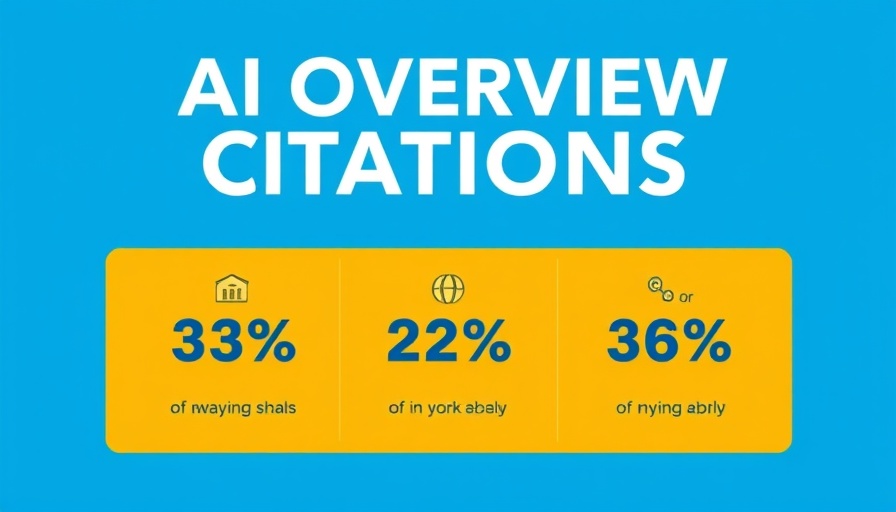
Understanding the Shift in Google Click-Through Rates
A recent analysis has stirred discussions across the digital marketing community, revealing a significant decline in click-through rates (CTRs) for Google's top search results. According to research from GrowthSRC Media, the CTR for the first organic position dropped from 28% to 19%, marking a 32% decrease. This decline has raised eyebrows as it appears to coincide with the broadened rollout of AI Overviews.
The Impact of AI Overviews on User Behavior
The rapid expansion of AI Overviews—from appearing for just 10,000 keywords in August 2024 to over 172,000 by May 2025—suggests a transformative shift in user interaction with search results. Google’s emphasis on AI-generated summaries raises questions regarding the efficacy of traditional SEO strategies. As more users turn their attention to AI Overviews, the engagement with top organic results diminishes, creating a ripple effect across various industries, including ecommerce, B2B, and EdTech.
Why Are Click-Through Rates Declining?
This decline isn't just limited to the top result; second positions have seen even steeper drops, with a 39% decrease. Interestingly, lower-ranking positions are experiencing a surge in CTR, increasing by 30.63%. This trend indicates that users are scrolling past AI summaries to seek original sources further down the results page. Research suggests that when users do not find immediate satisfaction in the AI-generated content, they explore deeper.
Insights from Major Publishers
Major publishers corroborate these findings. For instance, Carly Steven from MailOnline shared insights at the WAN-IFRA World News Media Congress regarding the stark difference in CTR when AI Overview elements are present. Their analysis revealed that CTRs plummeted dramatically on both desktop and mobile versions when these summaries appeared, echoing the concerns raised by GrowthSRC's study.
The Evolving Landscape of Google Shopping
The ecommerce sector is witnessing additional changes with the introduction of Google’s Product Widgets, which began appearing more frequently since late 2024. These widgets, featuring curated product selections directly in search results, could detract from clicks on standard organic listings, further complicating the traditional ecommerce landscape. Businesses must adapt their strategies to navigate this changing terrain effectively.
What Lies Ahead?
The continuing evolution of AI in search technology poses both challenges and opportunities for digital marketers. As users adapt to AI-enhanced experiences, brands must be agile and responsive. Understanding these shifts allows marketers to refine strategies, focusing on engaging content that competes effectively within this new context. Staying informed of Google’s updates and user behavior trends will be essential in formulating effective marketing strategies.
As businesses grapple with these changes, they should not only consider technical SEO adjustments but also prioritize the quality and originality of their content to reclaim user engagement and CTR.
 Add Row
Add Row  Add
Add 




Write A Comment